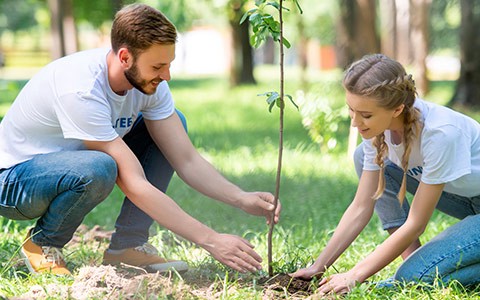
Are you planning to remove some trees to create something new in your garden? Taking steps to remove potentially damaged trees is wise to protect your home against damage from falling limbs or the whole tree. Depending on the follow-up plan, you can even save costs and time associated with tree-related yard maintenance.
However, owners often find it difficult to grow plants in the area where the tree stump was located, even after cleaning the debris. Hence tree removal seems an erroneous task instead of beneficial to some.
To help you avoid such perceptions, here are a few tips for planting after tree removal.
Understanding The Environment
It is apparent the soil from where you removed a tree differs from the rest of the garden. So, when you are planning to replant, consideration of soil is important since it will impact the growth. Further, if the tree abducted was damaged or diseased, there is a high chance of depleting the soil.
Moreover, if chemicals or salt were used to remove the previous tree, it is better to avoid the area altogether. That’s because the soil would lack the nutrients that the new plant would depend on. Fort Worth Arborist can tell you the optimum required environment.
Considering The Accurate Time
Roots from the abducted tree might have also created crowding, and putrefaction is not an overnight process. The decomposition might take a week or even longer, depending upon the size of the tree abducted.
So it is better to wait before planting a new tree in the same spot. Ideally, one should wait at least a year before replanting since microorganisms would also be working to rehabilitate the soil, impacting the growth of new plants.
Decide On An Adjacent Site
If you are not willing to wait or have already decided on planting a new plant, we have good news! Instead of planting where the last tree was removed, select an area adjacent to it. Yet, there are a few things to hold in mind, such as;
- The new spot should be at least five feet away from the old one so that the new tree has a chance of thriving.
- Though the removed tree would take away any competition for sunlight, make sure the new one has sufficient access to it.
The Tree You Intend To Plant
When you plan to replant at the same spot, it’s not just the place but also the new plant that needs a little consideration. Aspects like the size of the new plant, its maintenance, landscape suitability, impact on neighboring trees, and more.
Assessing these aspects can help you prevent unfair expenditure and misfortunes in the future. Conserving your time at the same point.
Summing Up
Following these tips will surely serve you successful replanting. However, if you still have questions about planting after tree removal, consider reaching out to an expert. Their years of first-hand experience and knowledge will undoubtedly serve you with the best possible advice, securing your garden as well as time and money.
Write and Win: Participate in Creative writing Contest & International Essay Contest and win fabulous prizes.


